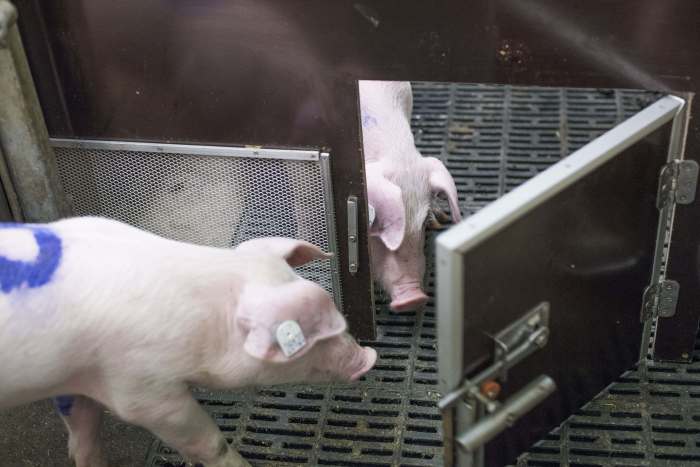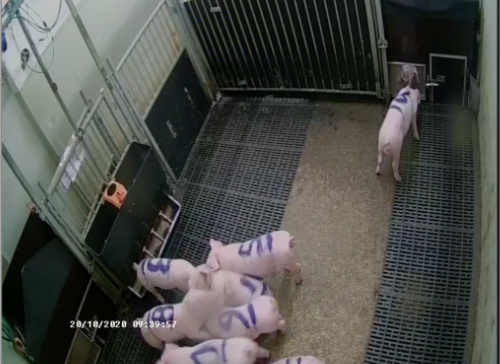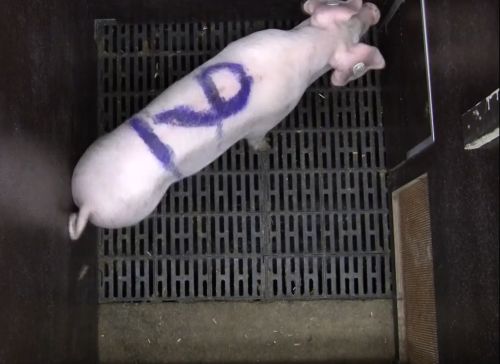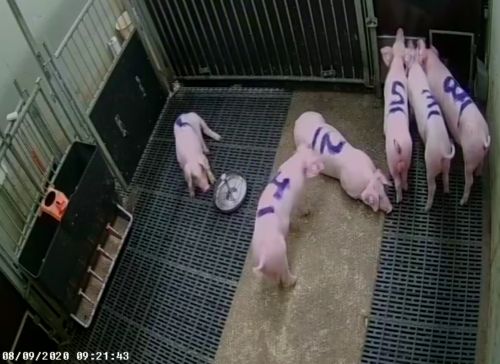Proximate factors mediating helping behaviour in pigs
Spontaneous helping in pigs is mediated by helper’s social attention and distress signals of individuals in need.
L. R. Moscovice, A. Eggert, C. Manteuffel and J. L. Rault
Abstract:
Helping behaviour is of special interest for the study of prosociality because it appears to be motivated by the needs of others. We developed a novel paradigm to investigate helping behaviour in pigs (Sus scrofa domesticus) and tested n = 75 individuals in eight groups in their home pens. During familiarization, two identical compartments were attached to the home pen, equipped with a mesh window and a door that could be opened from the outside by lifting a handle. During testing, a pig was briefly isolated from its group and then placed in one of the compartments. Each pig was trapped once, during two daily test sessions per group. Pigs spontaneously learned to open doors, and in 85% of cases, pigs released a trapped group member within 20 minutes (median latency = 2.2 minutes). Pigs were more likely and quicker to open a door to free the trapped pig than to open a door to an empty compartment. Pigs who were more proficient at door-opening during familiarization, and more attentive to the trapped pig were more likely to help. Trapped pigs exhibited behavioural signals of distress and increases in cortisol. Distress signals by the trapped pig increased its chances of being helped. Responses are consistent with several criteria for identifying targeted helping, but results can also be explained by selfish motivations. In a follow-up project, funded by the DFG and the FWF, we will further investigate the different motivations underlying spontaneous helping in pigs.


Supplementary Video S1
Top view of the test compartment, showing the behaviour of pig 4 in group 3B, shortly before being released.

Supplementary Video S2
View of the test compartment from inside group 3B’s home pen shortly before pig 4 was helped by pig 6. The control compartment is also in view to the left of the screen. Note that several potential helpers in the home pen display social nosing behaviour. Social nosing can occur during play and in social greeting contexts and is not indicative of aggression.

Supplementary Video S3
Top view of the test compartment, showing the behaviour of pig 9 in group 2B, shortly before being released.

Supplementary Video S4
View of the test compartment from inside group 2B’s home pen shortly before pig 9 was helped by pig 8. The control compartment is also in view to the left of the screen.